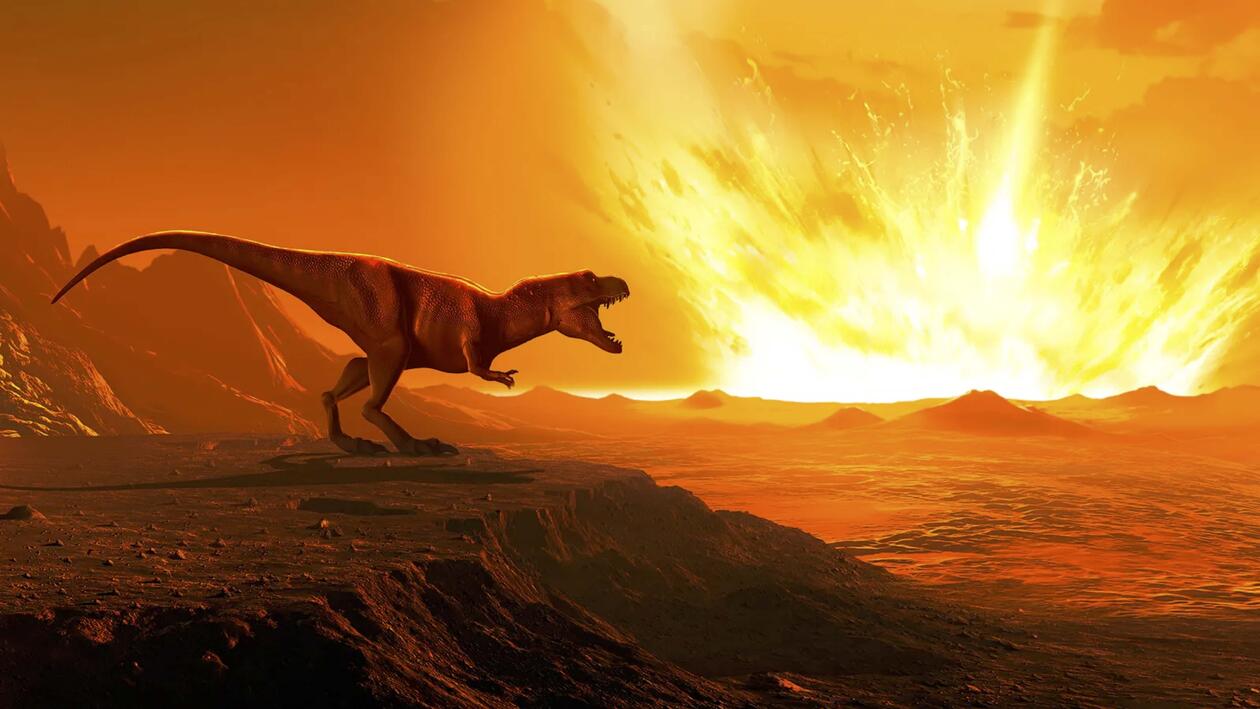Climate and mass extinction: Deep-sea temperature change at the Cretaceous-Paleogene boundary
This Master's project was assigned to Heidi Bernhoft von Obstfelder who started her Master's program in Earth Sciences, UiB, in the fall semester 2023. The Master's project is given by the research group Quaternary geology and paleo climate.
Hovedinnhold
Project description
Motivation and background:
Approximately 66 million years ago, Earth’s biosphere abruptly and fundamentally changed, enabling mammals to dominate the lands once roamed by dinosaurs. The Cretaceous-Paleogene (K-Pg) boundary marks one of the five major Phanerozoic mass extinction events. It is estimated that nearly 75 % of the species on Earth went extinct, including the non-avian dinosaurs. The cause of this mass extinction event remains strongly debated. The leading hypotheses centre around two planetary-scale disturbances: (1) flood basalt volcanism from the Deccan Traps, and (2) a very large bolide impact in the Yucatan Peninsula. Global temperature records are central to understanding the climatic effect of these events and hence their potential impact on ecosystems. However, our understanding of temperature change from the late Cretaceous to early Paleogene relies heavily on records of stable oxygen isotope data from deep-sea benthic foraminifera. Yet temperature is not the only factor that influences benthic foraminiferal stable oxygen isotope values. Independent temperature records are, therefore, needed.
In this project, you will reconstruct deep ocean temperatures using clumped isotope thermometry; a relatively new approach to derive robust temperature information from carbonates based on the ordering ("clumping") of stable isotopes within the molecules (Eiler, 2011). Using this approach, this masters project seeks to generate the first robust and direct record of deep ocean temperature change across the K-Pg boundary. You will join the DOTpaleo project team who are studying Paleogene climate through a combination of clumped isotope-based temperature reconstructions and Earth System modelling.
Research questions:
How did deep ocean temperatures change from the late Cretaceous to early Paleogene?
What impact did flood basalt volcanism from the Deccan Traps have on global deep ocean temperatures?
What role did global climate change play in the K-Pg mass extinction and in delaying the subsequent recovery of biodiversity?
Proposed course plan during the master's degree (60 ECTS):
Suggested classes, can be discussed:
Fall:
GEOV222 (10P)
GEOV228 (10P)
GEOV300 (5P)
Spring:
GEOV302 (10P)
GEOV231 (10P)
GEOV331 (5P)
GEOV342 (10P)
Felt- lab- og analysearbeid
New samples from a selected drill site will be ordered from IODP to supplement existing samples from collaborators. Samples will be wet-sieved and benthic foraminifera picked from the dried coarse fraction. Benthic foraminifera will be cleaned and analysed using a clumped isotope mass spectrometer, under guidance, to generate around 7 temperature data points. The results will be compared to existing records and model experiments. Furthermore, the new temperatures generated within this project will be compared to our existing clumped isotope-derived temperature records spanning the Paleogene.
Total estimate lab/analysis time: 6 months.
